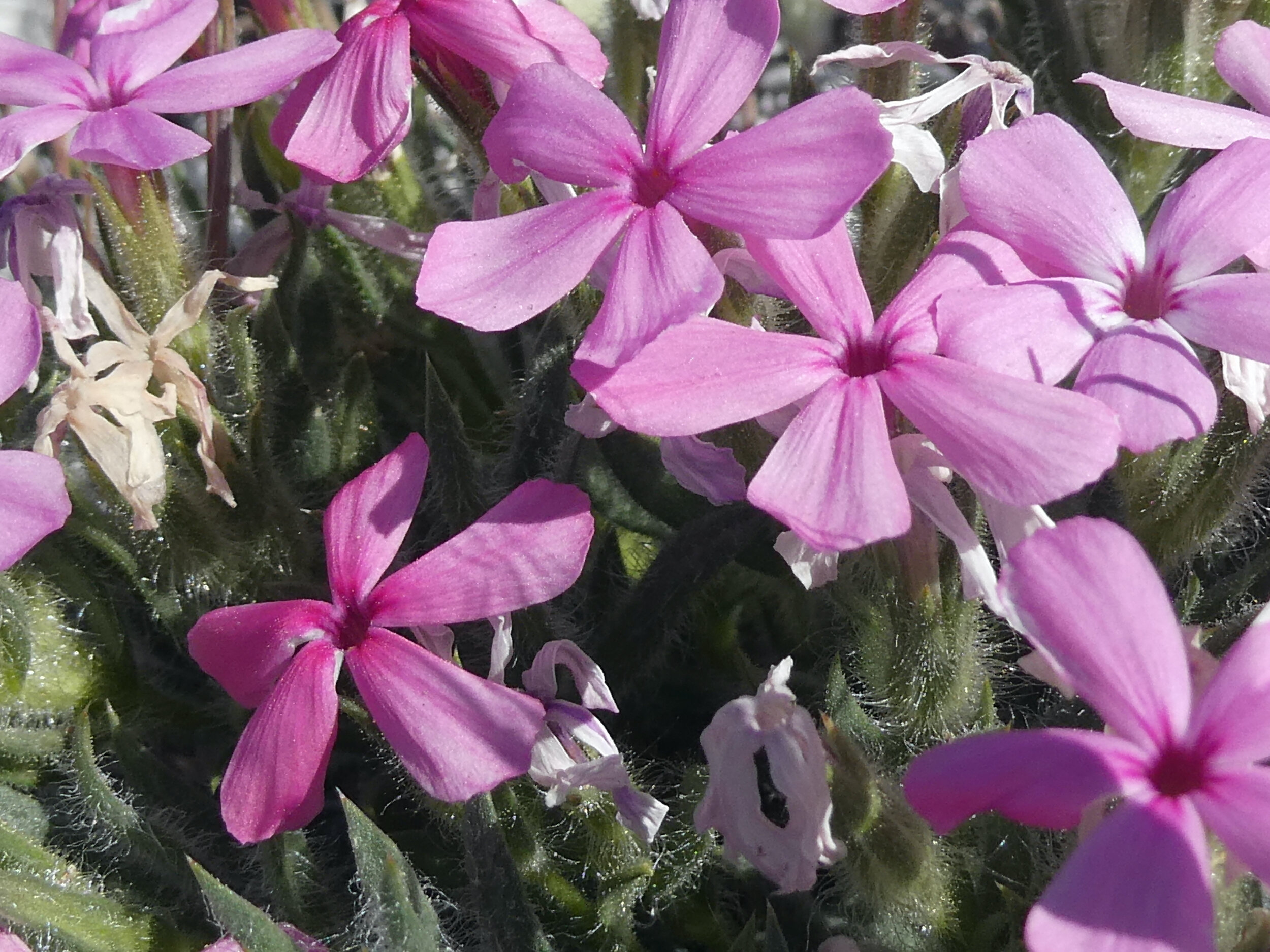Yreka Phlox
Phlox hirsuta
Yreka phlox (Phlox hirsuta) is a perennial subshrub in the Phlox or Polemoniaceae family that is endemic to Siskiyou County, California. There are four known locations near or in Yreka where populations have been sighted. Episcopal priest and botanist, Edward L. Greene discovered the plant in 1876. The exact location of Greene’s population is unknown, but believed to be on Soap Creek Ridge.
Yreka phlox grows 2-6 inches high from a stout, hairy woody base. Stems growing along the ground grow up to 8 inches long. Stiff hairs cover the plant, giving it the name hirsuta. Pink to purple flowers bloom during April through June from non-woody stems and cover the majority of the plant base. Leaves have a narrow lanceolate to ovate shape, grow opposite and in pairs along the stem. The leaves have no stalk, attaching directly to the stem.
The plant is restricted to serpentine soils at elevations between 2,800 to 4,400 feet. Ultramafic rock decomposes to create serpentine soils, which contain high concentrations of magnesium and iron and are known to have high concentrations of chromium and nickel. Due to the high concentrations of magnesium and iron and low levels of calcium, nitrogen and phosphorus, most plants cannot live on serpentine soils. However, diverse and unique plant communities evolve with this particular soil type. Jeffrey pines (Pinus jeffreyi), incense cedar (Calocedrus decurrens) and junipers (Juniperus spp) have evolved to live in serpentine soils and are indicators of Yreka phlox habitat.
Within Siskiyou County the four known occurrences of Yreka phlox are on China Hill, Soap Box Ridge, Cracker Gulch and near Jackson Street. On China Hill there are an estimated 1,000 to 3,000 plants growing on 47 acres. Fifty-five to 65 percent of this land is owned by the City of Yreka, and the remaining land is divided into private parcels zoned for residential development. Soap Creek Ridge contains 14 populations totaling 5,000 to 10,000 plants on 584 acres. Private landowners, including timber companies, California Department of Transportation and U.S. Forest Service own the land. Cracker Gulch is near Soap Creek Ridge and has 200 to 300 plants. A small ranch/timberland owner and a timber company own the land. The Jackson Street population is on private land and access to this occurrence has been heavily regulated. There is an estimated 200 to 300 plants at this site.
The primary threats to Yreka phlox are alteration or destruction of habitat from urban development on private land parcels zoned for residential development, timber harvesting, road construction, and off-road vehicle use. Less prominent threats to Yreka phlox are, but not limited to, fire suppression, theft and vandalism, herbicide use, domestic animal grazing, inadequate regulatory and conservation measures, extirpation from random events and competition with exotic plant species such as dyer’s woad (Isatis tinctoria) and star thistle (Centaurea solstitialis). Within the four known sites, the threats to Yreka phlox vary depending on land management, ownership and use.
Yreka phlox has been listed as "endangered" under the Endangered Species Act since February 3, 2000 in response to a lawsuit filed by KS Wild and the Native Plant Society of Oregon. It was listed as "endangered" by the State of California in 1986. Currently, a Draft Recovery Plan is under review by the U.S. Fish and Wildlife Services. The Draft Recovery Plan aims to increase known population sizes through permanent protection and propagating from seed collection.

